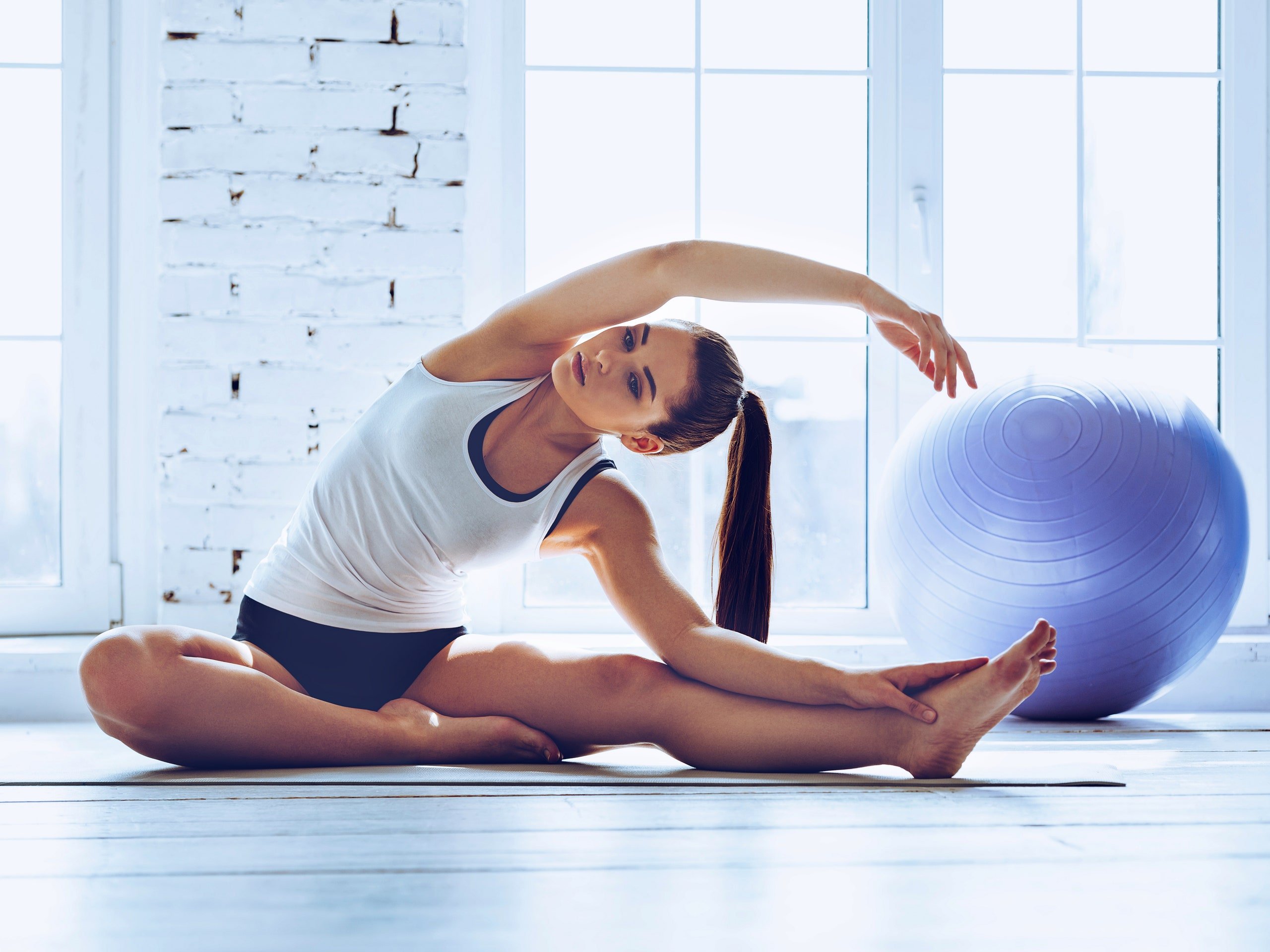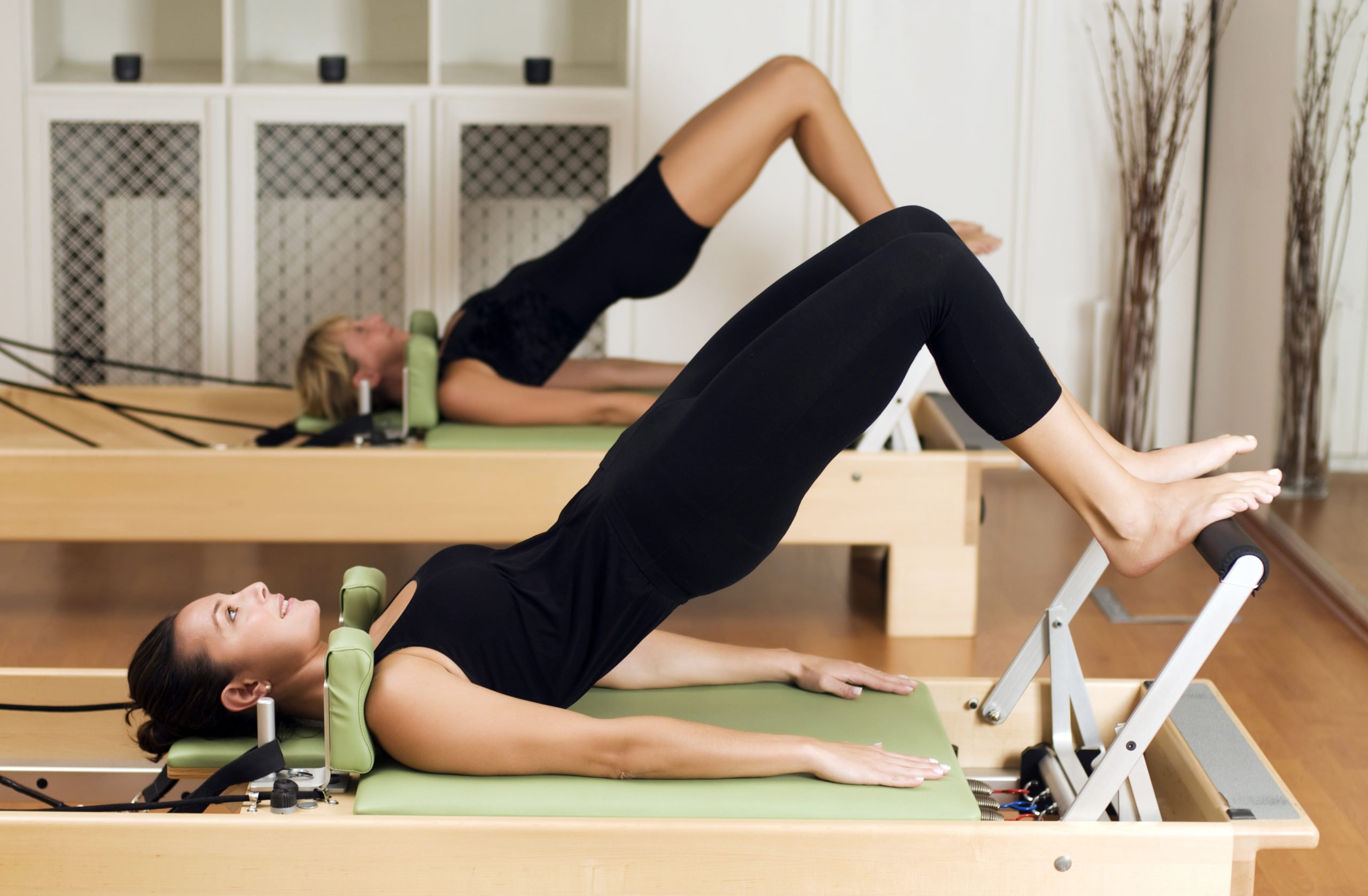Title: The Benefits of Pilates: A Comprehensive Review
Introduction:
Pilates is a popular form of exercise that focuses on improving flexibility, strength, and overall body awareness. In this article, we will explore the numerous benefits of practicing Pilates and how it can positively impact your health and well-being. Whether you're a beginner or an experienced fitness enthusiast, Pilates offers a wide range of advantages that can enhance your physical and mental capabilities.
1. Improved Core Strength:
- Pilates targets the deep muscles of the abdomen, back, and pelvic floor, helping to build a strong and stable core.
- Enhanced core strength improves posture, stability, and overall body alignment.
- A strong core can alleviate back pain and reduce the risk of injuries.
2. Increased Flexibility:
- Pilates incorporates dynamic stretching exercises that focus on lengthening and elongating muscles.
- Regular practice of Pilates can improve flexibility, making daily movements easier and reducing muscle stiffness.
- Enhanced flexibility can also help prevent injuries, particularly in athletes and individuals who engage in repetitive motions.
3. Enhanced Muscle Tone:
- Pilates employs controlled movements that work various muscle groups, promoting balanced muscle development.
- Regular practice of Pilates can lead to long, lean muscles, creating a toned and sculpted
What is pilates good for?
Pilates is a popular exercise method that has gained a significant following in recent years. Developed by Joseph Pilates in the early 20th century, it focuses on improving core strength, flexibility, and overall body awareness. With its emphasis on controlled movements and proper alignment, Pilates offers numerous benefits for individuals of all fitness levels. In this review, we will explore what Pilates is good for and why it has become such a popular exercise choice in the United States.
One of the primary benefits of Pilates is its ability to strengthen the core muscles. The core, which includes the abdominal muscles, lower back, and pelvic floor, plays a crucial role in maintaining stability and proper posture. Pilates exercises specifically target these muscles, helping to improve strength and stability in the torso. A strong core not only enhances one's physical appearance but also reduces the risk of back pain and improves overall body mechanics.
In addition to core strength, Pilates is also effective in improving flexibility. Many of the exercises in Pilates involve stretching and elongating muscles, which helps to increase range of motion and joint flexibility. Improved flexibility can enhance athletic performance, prevent injuries, and even alleviate muscle soreness and stiffness. Regular Pilates practice can gradually lead to increased flexibility, making it an ideal exercise
What are the benefits of doing Pilates?
19 benefits of Pilates
- It increases core strength. Pilates is famously known for its emphasis on the core — the center of the body from which all movement stems.
- It improves posture.
- It decreases back pain.
- It prevents injuries.
- It increases energy.
- It enhances body awareness.
- It decreases stress.
- It reduces menstrual pain.
Can Pilates change your body shape?
Pilates can be a highly effective form of exercise for changing your body shape. It can help to improve posture, alignment, and flexibility, as well as tone and strengthen muscles throughout the body. While Pilates is not typically considered a primary form of exercise for weight loss, it can be a helpful tool.
Is Pilates a good way to Lose Weight?
A 2021 study found Pilates to effectively reduce body weight and body fat percentage in participants with overweight or obesity. These effects were more pronounced in those with obesity only. Additionally, the study found that the longer a person performed Pilates, the more significant the weight loss.
What are the pros and cons of Pilates?
Like any workout routine that helps you burn fat, mat Pilates can keep your body leaner and firmer over time. However, the simplicity of the exercise means that you're less likely to lose muscle tone or endurance than with other workouts – which can actually cause you to gain weight after weeks of inactivity.



💡Did you know? Pilates exercises can help prevent & decrease back pain. They strengthen core support for the back, teach good alignment, & provide gentle stretches for tight back muscles. Sign-up to attend Pilates for Low Back Pain: https://t.co/6vOeL7CYTg pic.twitter.com/YoharkjPLS
— Rice Recreation (@ricerec) January 31, 2019
What fitness category is Pilates?
Pilates is a form of strength training, but it doesn't look like some of the other strength training exercises you might be familiar with. Pilates focuses more on improving muscle tone than building muscles, but the result is similar: greater stability and endurance.
Frequently Asked Questions
Is Pilates a muscular endurance?
Increased muscular endurance: Pilates uses a series of repetitive movements, improving muscular endurance levels and their ability to perform actions for extended periods of time. Building muscular definition: Many of the movements in Pilates focus on lengthening and strengthening the muscles.
Is Pilates a strength training or flexibility?
Peloton instructor Aditi Shah emphatically confirms that Pilates is a form of strength training since it uses your bodyweight as resistance, and can include other tools that help add resistance to the workout.
What area of fitness is Pilates?
The exercises are designed to increase muscle strength and endurance, as well as flexibility and to improve posture and balance. There is cautious support for the effectiveness of Pilates in improving flexibility, abdominal and lumbo-pelvic stability and muscular activity.
Is it better to do Pilates at home or gym?
With a comfortable surface and your body, at-home Pilates can improve balance, strength, and flexibility. You don't need a studio or fancy equipment to do Pilates properly. The major benefit of going into a studio is the quality of instruction, which is helpful for all practitioners.
Are Pilates good for losing weight?
A 2021 study found Pilates to effectively reduce body weight and body fat percentage in participants with overweight or obesity. These effects were more pronounced in those with obesity only. Additionally, the study found that the longer a person performed Pilates, the more significant the weight loss.
How will Pilates change my body?
Pilates Sculpts Long, Lean, Strong Muscles
Balance postures, deep core movements, and small, repetitive exercises that test endurance will transform your body and build strength by lengthening, toning, sculpting and strengthening. You will be able to see visible muscles along your arms, abs, and legs—long and lean.
FAQ
- Can Pilates help you lose belly fat?
- Does Pilates help you lose belly fat? Pilates Prahran can definitely help you lose belly fat, but it's important to note that targeted weight loss is not possible, meaning that if you want to lose belly fat, you'll need to aim for overall weight loss.
- What is pilates good for
- Feb 22, 2022 — 1. It can help relieve tension in your shoulders, back and legs ... Having strong core muscles promotes better posture, which, in turn, can
- Why does Pilates make you feel better?
- "Pilates is a type of strength training exercise that encourages you to identify and work within the limits of your body," explains Wonesh. "There's also an inherent mindfulness to it and a lot of breath work, which can help relieve tension and stress."
- What happens if you do Pilates everyday?
- One of the best things about doing Pilates every day is that you'll quickly start to see improvements in your form. This is due to the fact that you'll become more familiar with the correct way to do each exercise, and your body will start to automatically follow these movements. You'll avoid injuries.
- Who would benefit from Pilates?
- Pilates caters for everyone, from beginner to advanced. You can perform exercises using your own body weight, or with the help of various pieces of equipment.
- What body type does Pilates give you?
- Long, Lean Muscles Pilates focuses on lengthening and toning the muscles, as opposed to other types of exercise that bulk up the muscles. Pilates promotes muscular lengthening through controlled and precise movements, giving the body a more ethereal and streamlined appearance.
What is pilates good for
| What are 5 benefits of Pilates? | Top 5 Benefits of Pilates
|
| What was the purpose of Pilates? | The exercises are designed to increase muscle strength and endurance, as well as flexibility and to improve posture and balance. There is cautious support for the effectiveness of Pilates in improving flexibility, abdominal and lumbo-pelvic stability and muscular activity. |
| What are the 6 rules of Pilates? | These six principles are:
|
| Is Pilates a good way to Lose weight? | A 2021 study found Pilates to effectively reduce body weight and body fat percentage in participants with overweight or obesity. These effects were more pronounced in those with obesity only. Additionally, the study found that the longer a person performed Pilates, the more significant the weight loss. |
| How long does it take to see results from Pilates? | Once you get into a steady workout habit, how long does it take to see results from Pilates? While individual results may vary, most people can see noticeable body changes within just three weeks. However, those who do Pilates less often may take up to eight weeks to see noticeable results in their bodies. |
- How does Pilates help tone your body?
- Pilates exercises involve slow, controlled movements that help improve your range of motion and elongate your muscles. This can help create a toned and lean appearance in your muscles. With regular practice, you can expect to become more flexible and feel less stiff.
- What kind of body will Pilates give you?
- Health benefits of Pilates improved flexibility. increased muscle strength and tone, particularly of your abdominal muscles, lower back, hips and buttocks (the 'core muscles' of your body) balanced muscular strength on both sides of your body. enhanced muscular control of your back and limbs.
- What kind of body does Pilates give you?
- You'll get stronger, more sculpted muscles and gain flexibility. You may also have better posture and a better sense of well-being. Plan on doing this workout a few days a week, in addition to cardio, since Pilates isn't aerobic.
- What conditions can Pilates help with?
- What Can Clinical Pilates Help With?
- Spinal pain management and prevention.
- Post-surgery or traumatic injury rehabilitation.
- Osteoporosis and arthritis management.
- Balance retraining.
- Chronic pain.
- Sports-related strength and conditioning, including injury prevention.
- Hypermobility disorder.
- Enhancing agility and flexibility.
- What Can Clinical Pilates Help With?
- Is yoga or Pilates better?
- Yoga can help deepen your meditation practice, improve your flexibility, and help with balance. Pilates may be better for recovering after injury, improving posture, and for core strength.
